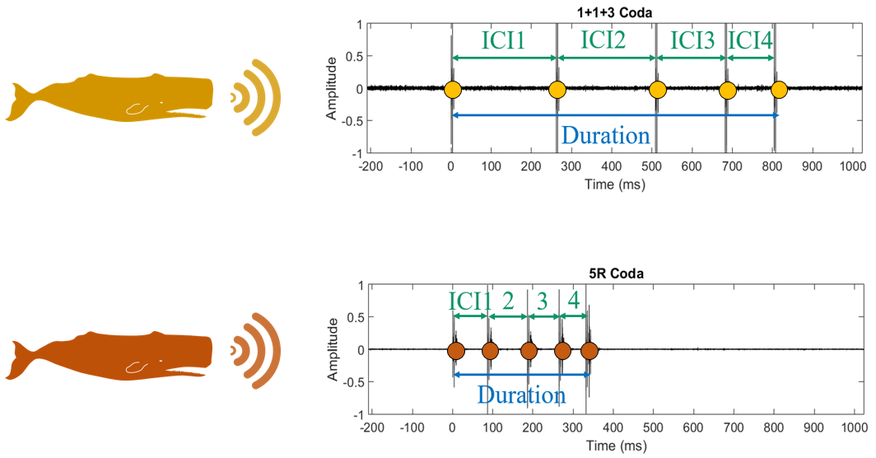I consider myself a bioacoustician and have a variety of research interests, including:
My Ph.D.
Humans have dialects, and these dialects vary with both space and time. Studying how dialects change can tell us about the behavior, movement, and culture of their speakers. Long-term research has shown that different groups of sperm whales have different dialects as well, and these dialects were the focus of my Ph.D. thesis. In social situations, sperm whales make Morse code-like patterns of clicks, called codas. Different groups of whales, called vocal clans, use different codas and thus have different dialects. Clans also have different movement, foraging, and social behaviors, and whales from different clans never interact.
- The adaptive and functional value of rhythm in communication systems
- Animal culture
- Dialect evolution
- Methods for call classification and clustering
- The interplay between vocal and social complexity
My Ph.D.
Humans have dialects, and these dialects vary with both space and time. Studying how dialects change can tell us about the behavior, movement, and culture of their speakers. Long-term research has shown that different groups of sperm whales have different dialects as well, and these dialects were the focus of my Ph.D. thesis. In social situations, sperm whales make Morse code-like patterns of clicks, called codas. Different groups of whales, called vocal clans, use different codas and thus have different dialects. Clans also have different movement, foraging, and social behaviors, and whales from different clans never interact.
Despite our general knowledge of sperm whale dialects, the question of how dialects initially evolved and how they may (or may not) be evolving today remains enigmatic. We also don't know how many cultural clans exist worldwide or how dialects vary on a global scale. Through my Ph.D., I showed that sperm whale dialects have changed very little over 40-year timespans, and found that 7 sperm whale clans inhabit the Pacific Ocean. I also designed new methods for analyzing acoustic datasets and synthesized what is known about rhythm in cetacean vocalizations.
Collaborators and funders













